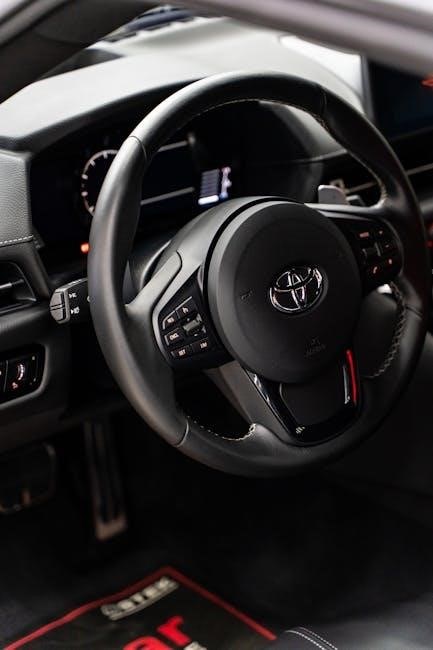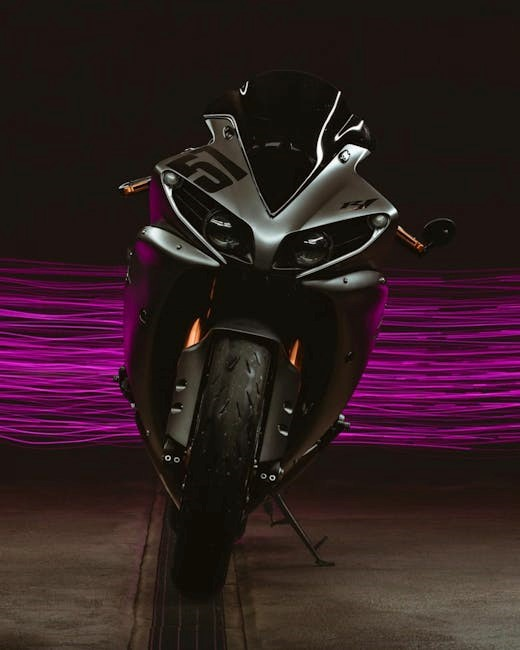
Motorcycles are primarily manual, offering control and efficiency, while automatics provide ease, especially in traffic. Both options cater to different riding styles and preferences, ensuring a tailored experience.

Manual Motorcycle Transmissions
Manual motorcycles are the most common type, offering precise control and efficiency. They require skill to operate, with a clutch and gear shifting, providing an engaging ride.
Advantages of Manual Motorcycles
Manual motorcycles offer several advantages, including better fuel efficiency, lower purchase costs, and superior control. They are lighter, accelerating faster and providing a more engaging ride. Riders can optimize engine performance by manually shifting gears, which enhances responsiveness and connection to the bike. Additionally, manual transmissions are simpler in design, requiring less complex technology and maintenance compared to automatics. This simplicity often results in longer longevity and easier repairs. For experienced riders, the ability to shift gears manually adds to the thrill and satisfaction of riding, making manual motorcycles a preferred choice for many enthusiasts.
Disadvantages of Manual Motorcycles
Manual motorcycles require considerable skill and practice to operate effectively, making them less accessible to new riders. Shifting gears demands constant attention, which can distract from road awareness. Additionally, manual bikes need more physical effort, especially in heavy traffic, leading to fatigue during long rides. The complexity of coordinating clutch and throttle can also result in stalling or loss of control if not done properly, particularly for inexperienced riders. This makes manual motorcycles less convenient in stop-and-go conditions compared to automatics. Furthermore, the need to balance and coordinate these elements adds to the learning curve, potentially discouraging some from choosing manual bikes.
Maintenance of Manual Motorcycles
Manual motorcycles require regular maintenance to ensure optimal performance. The clutch and gear system need periodic inspection and lubrication to prevent wear and tear. Over time, the clutch may wear out and require replacement, which can be costly. Additionally, the gearbox and bearings must be serviced to maintain smooth shifting. While manual bikes have fewer complex components compared to automatics, they still demand attention to details like cable adjustments and fluid levels. Proper upkeep is essential to avoid mechanical failures and ensure longevity. Regular servicing by a professional can help maintain the bike’s efficiency and reliability on the road.
Fuel Efficiency of Manual Motorcycles
Manual motorcycles are generally more fuel-efficient than their automatic counterparts. This is due to their lighter weight and the ability to optimize gear shifts according to riding conditions. By manually controlling the gears, riders can adjust to the most efficient RPM range for the engine, reducing fuel consumption. Additionally, the absence of complex automatic systems means less energy loss, leading to better mileage. However, fuel efficiency also depends on the rider’s skill and habits, as improper shifting can negate these advantages. Overall, manual bikes offer a cost-effective solution for riders seeking to maximize their fuel economy while enjoying a more engaging ride.

Automatic Motorcycle Transmissions
Automatic motorcycles simplify riding by eliminating manual gear shifts, ideal for novices and urban commutes. They offer smooth acceleration and ease of use without clutch operation.
Advantages of Automatic Motorcycles
Automatic motorcycles offer unparalleled ease of use, making them ideal for beginners and urban riders. They eliminate the need for manual gear shifting, reducing rider fatigue and allowing focus on the road. The absence of a clutch lever simplifies controls, especially in heavy traffic, where frequent stops and starts are common. Automatics also provide smooth acceleration and seamless power delivery, enhancing the riding experience. Additionally, they are less intimidating for new riders, as they do not require coordination between clutch and throttle. This makes automatic motorcycles a practical choice for those prioritizing convenience and stress-free commuting.
Disadvantages of Automatic Motorcycles
Automatic motorcycles have several drawbacks compared to their manual counterparts. They are generally heavier and more expensive, with complex mechanisms that increase maintenance costs. Fuel efficiency is often lower due to the added weight and technology. Additionally, automatics can lack the precise control and direct connection to the engine that manual riders enjoy. In high-performance situations, automatics may respond slower, reducing acceleration efficiency. They also tend to have fewer model options and are less popular among experienced riders who prefer the engagement of manual shifting. These factors make automatic motorcycles less appealing for those seeking a sporty or cost-effective ride.
Maintenance of Automatic Motorcycles
Maintaining an automatic motorcycle involves addressing its complex transmission system, which includes belts, sensors, and hydraulic components. These parts require regular inspection and occasional replacement due to wear and tear. The advanced technology in automatic motorcycles means higher maintenance costs compared to manuals. Additionally, the system’s complexity often demands specialized tools and expertise, which can be harder to find and more expensive. Routine maintenance is crucial to ensure smooth operation and prevent costly repairs. Riders must also monitor fluid levels and filters specific to the automatic system. Overall, automatic motorcycles require more attention and resources to maintain optimal performance and longevity.
Fuel Efficiency of Automatic Motorcycles
Automatic motorcycles generally have lower fuel efficiency compared to their manual counterparts due to their heavier weight and complex systems. The added components, such as sensors and hydraulic mechanisms, increase energy consumption. While modern advancements have improved efficiency, automatics still tend to consume more fuel, especially in stop-and-go traffic where constant shifting occurs. However, some models with advanced automatic transmissions are narrowing this gap. Riders seeking optimal fuel economy may still prefer manual motorcycles, but automatics offer convenience that many find worthwhile despite the trade-off in efficiency.

The Manual vs. Automatic Debate
The debate between manual and automatic motorcycles centers on control, convenience, and riding style. Manuals offer precise gear control and better acceleration, appealing to experienced riders who enjoy the hands-on experience. In contrast, automatics simplify riding, especially in traffic, making them ideal for beginners or those seeking ease. Cost differences also play a role, with manuals typically being more affordable. While automatics are gaining popularity, manuals remain the preferred choice for many due to their performance and engagement. This debate reflects diverse rider needs, with no clear winner, as both transmissions cater to different preferences and lifestyles.

Choosing the Right Transmission for Your Needs
Selecting between manual or automatic involves considering riding habits, skill level, and terrain. Assessing personal preferences and typical usage helps determine the most suitable transmission type effectively.
Consideration of Traffic Conditions
Traffic conditions significantly influence the choice between manual and automatic motorcycles. In heavy, stop-and-go traffic, automatic motorcycles reduce rider fatigue by eliminating constant clutch and gear shifts. This makes commuting easier and less stressful. Conversely, manual transmissions offer better control in dynamic traffic situations, allowing riders to quickly adjust speed and maneuver through tight spaces. For frequent city riders, automatic models are ideal due to their ease of use. However, those who prefer precise control and are comfortable with manual shifting may still opt for a manual in traffic. Balancing convenience and control is key.
Consideration of Riding Experience
A rider’s experience level plays a crucial role in choosing between manual and automatic motorcycles. For novices, automatic models are highly recommended as they simplify the learning process, eliminating the need to coordinate clutch and gear shifts. This reduces the risk of stalling and allows new riders to focus on balancing and braking. On the other hand, experienced riders often prefer manual transmissions for the enhanced control and connection to the bike they provide. The ability to shift gears manually can also be more engaging and enjoyable for seasoned motorcyclists. Ultimately, matching the transmission type to the rider’s skill level ensures a safer and more enjoyable experience.


Future Trends in Motorcycle Transmissions
Future trends in motorcycle transmissions are expected to blend innovation and practicality, catering to diverse rider needs. Advances in dual-clutch technology and semi-automatic systems will likely dominate, offering smoother shifting and reduced rider fatigue. Electric motorcycles may feature single-gear or advanced automatic systems, prioritizing efficiency and simplicity. Hybrid models could emerge, combining manual and automatic features for optimal performance. Additionally, smart shifting systems, integrating AI for adaptive gear changes, may become mainstream. These advancements aim to enhance riding experiences while addressing environmental concerns, ensuring motorcycles remain thrilling yet sustainable for future generations.